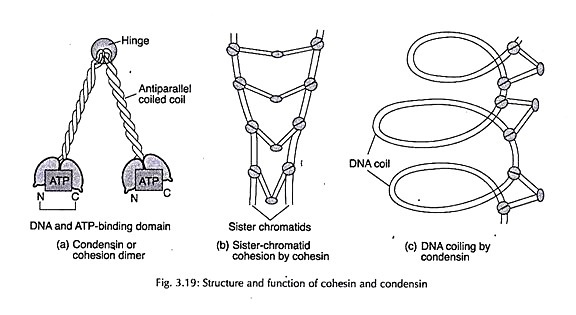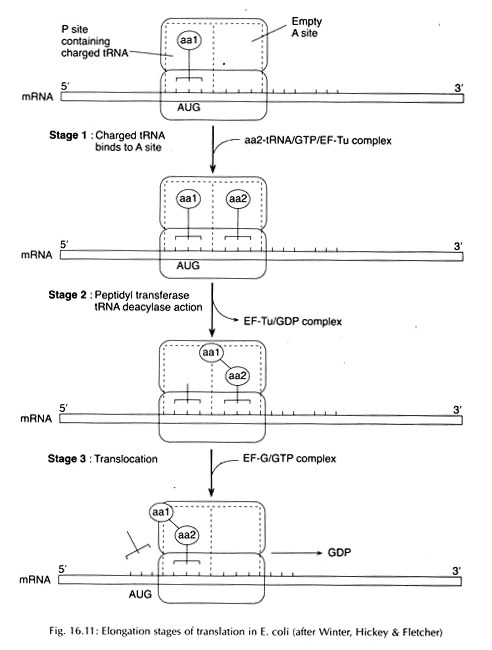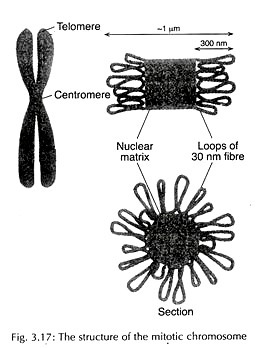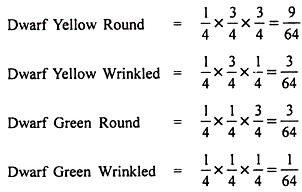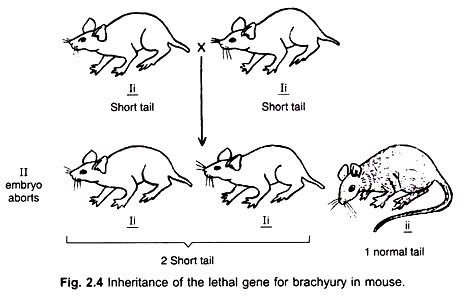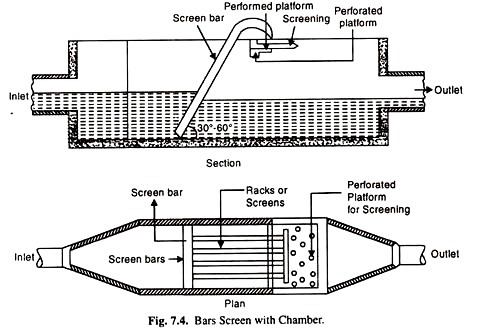Among all animal and plant cells, none has been more extensively studied than the mammalian erythrocyte or red blood cell.
The erythrocyte has long been the favorite of investigators studying the plasma membrane because relatively pure membrane preparations are easily obtained.
The mature erythrocyte contains no nucleus, mitochondria, ribosomes, endoplasmic reticulum, or other organelles; instead, this highly specialized cell consists essentially of a concentrated (semi- crystalline) solution of hemoglobin encased in a membrane.
Because of the red cell’s relative simplicity, its membranes are easily separated from other cytoplasmic constituents (primarily hemoglobin) by centrifugation following osmotic lysis of cells.
Results obtained using erythrocytes have frequently been extrapolated to all cells. This is unfortunate because the erythrocyte is not a typical cell, and it is therefore unlikely that the chemical composition and organization of its limiting membrane is representative. Indeed, with increased interest in studying the plasma membranes of other cells and with the advent of methods for isolating these membranes, our knowledge of the plasma membrane has expanded rapidly in recent years.
Existence of Lipid in the Membrane:
As early as 1899, E. Overton recognized that the boundary of animal and plant cells was “impregnated” by lipid material. Overton’s conclusions were based on exhaustive studies of the rates of penetration of more than 500 different chemical compounds into animal and plant cells. In general, compounds soluble in organic solvents entered the cells more rapidly than compounds soluble in water. These differences were attributed to the “selective solubility” of the membrane, that is, lipid-soluble materials would pass into the cell by dissolving in the corresponding lipid elements that made up the membrane.
Overton suggested that cholesterol and lecithins might be among the lipid constituents of the plasma membrane, a suggestion that was later substantiated chemically. The pioneering studies of Overton at the turn of the century set the stage for Gorter, Grendel, Cole, Danielli, Harvey, Davson, and others who attempted to determine the specific manner in which the lipid might be organized within the membrane.
The Langmuir Trough:
One of the most valuable instruments used to study the behavior of lipid films is the Langmiur trough (Fig. 15-1). If lipid containing hydrophilic groups (such as the carboxyl groups of fatty acids or the phosphate groups of phospholipids) is dissolved in a highly volatile solvent and several drops are then carefully applied to the surface of the water, the lipid spreads out to form a thin, monomolecular film in which the hydrophilic parts of each molecule project into the water surface and the hydrophobic parts are directed up, away from the water (Fig. 15-2).
In 1917, I. Langmuir introduced a clever technique for measuring the specific minimum surface area occupied by a monomolecular film of lipid and the force necessary to compress all the lipid molecules into this area. His device, known as the Langmuir trough or Langmuir film balance, has been used extensively over the past several decades in connection with physical measurements of membrane lipids.
The apparatus (shown in Fig. 15-1) consists of a shallow trough coated with a nonwettable material so that it can be filled with water to a level slightly higher than its edges. A bar is placed across the width of the tray and is used to sweep dirt and dust from the water. A second bar called the “fixed barrier” (which, in fact, is slightly movable), floats on the water surface and is connected to a torsion balance. After the surface of the water is swept clean, a third bar, called the “movable barrier,” is placed across the clean region of the trough and a known quantity of dissolved lipid is added to the space between it and the fixed barrier.
The lipid spreads out over the water surface, forming a layer one molecule thick (Fig. 15-2). The movable barrier is then slowly pushed toward the fixed barrier, thereby compressing the lipid until it forms a continuous and rectangular monomolecular film. The force exerted by the film on the fixed barrier can be measured using the torsion wire gauge.
From the area occupied by the lipid and the amount initially added to the trough, it is possible to calculate the surface area occupied by a single lipid molecule. Langmuir himself employed this device to study the behavior of the surface films formed by a variety of organic compounds, and for this work he received the Nobel Prize in Chemistry in 1932. Others have applied the same technique in specific studies of membrane lipids.
Gorter and Grendel’s Bimolecular Lipid Leaflet Model:
In 1925, E. Gorter and F. Grendel published the results of their studies on the organization of lipid in the membrane of the red blood cell. Their studies were carried out using blood from a variety of mammals, including dogs, sheep, rabbits, guinea pigs, goats, and humans, and all yielded essentially the same results.
The lipid present in accurately measured quantities of washed red blood cells was extracted with acetone and the acetone was then evaporated, leaving the lipid as a residue. This residue was redissolved in benzene and spread in a Langmuir trough to form a tightly packed monomolecular layer. The surface area occupied by the extracted lipid was then measured.
Gorter and Grendel determined the numbers of red cells present in each sample of blood analyzed and estimated the total surface area of the cells by multiplying the cell number by the average surface area per cell. (The surface area of the erythrocyte was estimated using the relationship proposed by Knoll that for red blood cells the surface area = 2d2, d being the diameter of the cell determined microscopically. This estimate was subsequently shown to be in error.)
By dividing the total surface area occupied by a monomolecular layer of membrane lipid extracted from these cells by the total cell surface area, the number of lipid layers present in the membrane was obtained. The value varied between 1.8 and 2.2, leading Gorter and Grendel to propose that the cell membrane was formed by a bimolecular lipid sheet.
They further suggested that the polar ends of the lipid molecules of one layer were directed outward (from the cell) toward the surrounding plasma and the polar ends of the lipid molecules forming the other layer were directed inward toward the cell hemoglobin. Thus the nonpolar, hydrophobic ends of the lipid molecules would face one another (Fig. 15-3).
In the past 15 years, the results of Gorter and Grendel have been reexamined under improved conditions by a number of investigators. The validity of Gorter and Grendel’s bimolecular lipid leaflet model depends on the assumptions that (1) all the erythrocyte lipids are in the plasma membrane, (2) all of this lipid was extracted using their acetone procedure, and (3) the average surface area of the cells was accurately estimated. The first assumption has been verified—all the erythrocyte lipid is in the plasma membrane.
However, it is now clear that Gorter and Grendel extracted only 70 to 80% of the total lipid. This error would seriously alter the predicted ratio of lipid film area to cell surface area if it were not for the fact that Gorter and Grendel also underestimated the red blood cell surface area by a comparable amount. The two errors canceled each other out, so that the ratio of 2:1 is still obtained.
In the time since their original studies were conducted, the quantitative distributions of membrane lipids in erthrocytes have been reevaluated using newer and improved techniques that guarantee total lipid extraction from the membranes and more accurate measurements of cell surface area.
Some of the new methods account also for the specific physical dimensions of various lipid molecules known to be present in the membrane (fatty acids, phospholipids, neutral lipids, etc.) in making calculations of the lipid surface area. For the most part, these studies indicate that indeed there is enough membrane lipid present to form a layer two molecules thick.
Other sources of support for the presence of the lipid bilayer include results of X-ray diffraction analysis of dispersions of isolated cell membranes and electron spin resonance (ESR) studies that indicate that the lipid molecules are oriented with their long axes perpendicular to the plane of the membrane.
Attempts have been made to reconstruct lipid bilayers using molecular models for the various membrane lipids and by considering the attractive and repulsive forces resulting from van der Waals interactions, hydrogen bonds, and electrostatic interactions. These studies indicate that a stable bimolecular lipid leaflet can be formed by a tail-to-tail interdigitation of the lipids.
The dimensions, electron-microscopic appearance, permeability, surface tension, and electrical capacitance of artificially created lipid bilayers (i.e., liposomes) are very similar to those of natural biological membranes. Finally, freeze-fracture techniques used in transmission electron microscopy produce images of plasma membranes and ER membranes that suggest a natural plane of cleavage at the center of the membrane. A plane susceptible to such cleavage would be provided by the space at the center of the bimolecular lipid leaflet.
Functional Domains in the Plasma Membrane:
Cellular membranes vary in biological functions, in kinds and relative amounts of phospholipids, and in quantitative lipid-to-protein ratios (see later). Consider, for example, the plasma membrane of a parenchymal cell in the liver. The membrane forms junctions with at least three different neighboring structures (Fig. 15-7):
(a) One face of the liver cell plasma membrane forms a junction with the membranes of the capillary sinusoids, and across this face pass various substances exchanged between the bloodstream and the liver cell cytosol (e.g., sugars, amino acids, insulin, etc.). The membrane in this region would be expected to contain specific transferees and hormone receptors.
(b) A second face (called the contiguous face) is formed with the plasma membranes of neighboring cells, and it is across this face that intercellular exchange takes place,
(c) A third face of the liver cell is in contact with the bile canaliculi, into which bile salts and bile pigments are continuously discharged; here too the organization and composition of the plasma membrane would be expected to be rather specific. W. H. Evans and others have shown that the different faces of the liver cell plasma membrane are clearly distinguishable in enzyme content and molecular composition.
The epithelial cells that line the small intestine also reveal a differential distribution of membrane proteins. The portion of the membrane facing the intestinal lumen is rich in glycoproteins, whereas the opposite membrane face contains sodium, pumps. The membrane uniformity apparent during electron microscopy of cells belies the chemical heterogeneity that actually exists.
Cell-Cell Junctions and Other Specializations of the Plasma Membrane:
The plasma membranes of neighboring cells in a tissue frequently exhibit specialized junctional regions that play a role in cell-cell adhesion and in intercellular transport. The most common of these junctions are (1) Tight junctions (zonula occludens),
(2) Intermediate junctions or belt desmosomes (also referred to as terminal bars or zonula adherens),
(3) Spot desmosomes (macula adherens),
(4) Gap junctions or connexons (also called nexuses), and
(5) Plasmodesmata (Figs. 15-23 to 15-26, and Fig. 15-31).
Tight Junctions:
In tight junctions, the plasma membranes of neighboring cells fuse with one another at one or more points. At these points of fusion, the external half- membrane of one cell may form a continuous leaflet with the external half-membrane of the adjacent cell. Tight junctions occur at the same circumferential level of the cell, so that they give rise to belts of fusion points with neighboring cells. The belt obliterates the intercellular space and acts as a barrier to the flow of materials between the cell surfaces.
Intracellular, the belts of tight junctions are reinforced by a network of fine filaments that radiate into the cytoplasm. Tight junctions between cells are formed by two inter- digitating rows of membrane particles (probably integral membrane proteins), one row contributed by each cell.
These rows are called sealing strands (Fig. 15- 24) and act in much the same manner as the two halves of a zipper. The number of rows of sealing strands linking neighboring cells and the extent to which they interconnect to form a network vary from one type of tissue to another. It is also thought that sealing strands act to deter the movements of other proteins within the plasma membrane. In this way, the functional specialization of different faces of the membrane can be maintained.
Intermediate Junctions:
Intermediate junctions, or belt desmosomes, are girdles of contractile filaments appressed to the cytoplasmic surfaces of juxtaposed membranes. The girdles of contractile filaments have been shown to contain actin and appear also to interweave with another web of filaments that extends into microvilli (Fig. 15-23).
Spot Desmosomes:
Unlike tight junctions and belt desmosomes, spot desmosomes (or macula adherens) do not form a belt around the cell. Instead, they are discrete buttonlike attachment points scattered over the opposing membrane surfaces (Fig. 15-23, 15-24, and 15-25). In the region of a spot desmosome the intercellular space between the adjacent plasma membranes narrows to a distance of about 300 Å (30 nm).
The intercellular space contains a central dense band (the central lamella). The cytoplasm adjacent to this region of the membrane is divided into two regions: a lucid region that lies immediately adjacent to the membrano and a neighboring dense band called the cytoplasmic plaque. Microfilaments called tonofilaments arise from this region and radiate into the cytoplasm, where they may also form links with other spot desmosomes. Tiny rodlike connectives appear to link the central lamella with the cytoplasmic plaque. Spot desmosomes are believed to be the strongest points of attachment between neighboring cells.
Epithelium is a good example of a tissue in which neighboring cells contain the various junctions just described. Beginning at the lumenal surface of the epithelium (i.e., the apical surface of the cells) and “descending” toward the basement membrane, the junctions occur in a characteristic order: a belt of tight junctions is followed by a belt of intermediate junctions, and spot desmosomes are more abundant near the basal ends of the cells.
Gap Junctions:
The gap junction or nexus is probably the most complex modification of adjacent plasma membranes. In the gap junction, the opposing plasma membranes are separated by a distance of only 30 to 40 Å (3-4 nm) and the space is penetrated by a number of pipelike structures that extend from the cytosol of one cell into the cytosol of the neighboring cell (Fig. 15-26).
Each pipe is composed of two cylindrical proteins called connexons, one connexon contributed by each of the two juxtaposed cells. Each connexon spans the plasma membrane, protruding about 10 Å (1 nm) into the cytosol on one side of the membrane and about 15 to 20 Å into the extracellular space on the other. Connexons are composed of six protein subunits having molecular weights of about 30,000. Each subunit is approximately rod-shaped, with a diameter of 25 Å.
Of special interest is the finding by P. N. Unwin and G. Zampighi that the long axis of each rod is not parallel to the long axis of the cylinder; instead, there is a slight angle of inclination (Fig. 15-26). It has been suggested that this angle is varied to open and close a channel at the center of each connexon. When opened, the connexon channel has a diameter of 15 to 20 Å.
The channel is hydrophilic and allows intercellular passage of a wide variety of molecules having molecular weights up to about 800 (e.g., salt ions, amino acids, sugars, vitamins, certain hormones, and chemical messengers such as cyclic AMP). Rotation of the ends of the subunits acts to close the channel and interrupt the passage of materials between cells. Closure of connexons seals off dying cells in a tissue, thereby preventing the loss of nutrients from adjacent healthy cells.
In freeze-fracture studies, gap junctions are revealed as patches of closely packed connexons (Fig. 15-24). In some tissues, the sealing strands characteristic of tight junctions occur at the margins of the connexon patches.
Microvilli and Surface Ruffles:
In some tissues, much of the plasma membrane at the apical surface is modified to form numerous fingerlike outfoldings called microvilli (Fig. 15-27). The microvilli, which usually are about 1-2 µm long, greatly increase the surface area of the membrane and are especially abundant in (but not restricted to) cells having a transport activity such as absorptive epithelium or glandular epithelium. In absorptive epithelium, the microvilli are often referred to as the brush border. Individual cells in culture may also display microvilli.
Microvilli contain bundles of about 20 to 30 actin filaments (see Fig. 15-29) that are extensions of the cytoskeleton; at one end, the filaments are anchored to the undersurface of the plasma membrane and at the other end they enter the terminal web that forms a plane just below the base of the microvilli (Fig. 15-23). Filaments of the terminal web insert into the desmosomes that encircle the cell.
Depending on physiological conditions microvilli may be drawn inward toward the cell or reextended. On the basis of their extensive studies of brush borders, M. S. Mooseker and L. G. Tilney have suggested that movements of the microvilli may be brought about by an interaction between certain actin filaments of each microvillus and myosin filaments in the terminal web. The interaction is reminiscent of that which occurs between actin and myosin in contracting muscle cells.
The plasma membranes of many cells give rise to thin undulating folds called surface ruffles or lamelipodia. The intracellular microtrabecular lattice and the cvtoskeleton that forms and supports this structure are readily discerned in high- voltage electron photomicrographs of whole cells (Fig. 15-28). Ruffles are especially characteristic of cells carrying out endocytosis.
The Glycocalyx:
Carbohydrate chains that are part of glycoprotein and glycolipid molecules of the plasma membrane form a networklike coat on the outer surface of the membrane. This coat is called the glycocalyx or “fuzzy coat.” Some tissues such as the absorptive epithelium of the intestine have an especially thick glycocalyx that surrounds the microvilli and is readily discerned during electron microscopy (Figs. 15-23 and 15-29).
Plasmodesmata:
In plant tissues, the cytoplasm of neighboring cells may be connected through numerous narrow channels that penetrate the fibrous cell wall separating the cells. The channels, called plasmodesmata, are formed by outward extensions of the plasma membranes of adjacent cells (Fig. 15-30) and are much larger than the channels of gap junctions. Plasmodesmata provide for the direct exchange of materials between the cytosols of neighboring cells tissue.